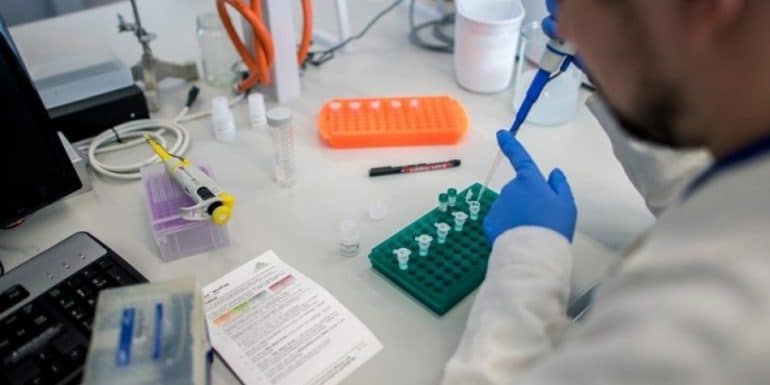A new sub-variant of the coronavirus, HBV.1.5, which is spreading rapidly in more and more countries and tends to become dominant, is the most contagious to date.
Epidemiologist Dr Maria Van Kerkhove of the World Health Organization (WHO) said that the new sub-variant of Omicron has already been detected in 29 countries and probably exists in even more in reality. The new strain has mutations that allow it to quickly infect and multiply.
“We are concerned about her broadcast advantage. "Especially in some countries in Europe and North America, mainly in the northeastern US, ChBB.1.5 has rapidly replaced other circulating variants," she said, noting that a risk assessment for ChBB will soon be released by the WHO. 1.5.
Today, it is estimated that, due to HBV.1.5, infections in the US are doubling every two weeks or so. The nation's Centers for Disease Control and Prevention (CDC) estimates that HBV.1.5 was responsible for about four in ten (40,5%) new coronavirus infections in the US at the end of December, up from just 4% in early December, while an increase and admissions to US hospitals of patients with Covid-19.
Although more contagious, it is currently unclear whether HBV.1.5 is more dangerous in terms of symptoms and disease severity. So far, according to Kerchowe, "we have no evidence that the severity has changed with HBV.1.5." But the WHO considers it important to monitor its spread, as in the last month there has been a 15% increase in deaths from Covid-19 internationally. In fact, according to Kerchowe, "we know that this is an underestimate because there are delays in the publication of the data".
However, although HBV.1.5 is steadily gaining ground internationally, it is not dominant in China, where most infections so far come from Omicron's BA.5 subvariant, which is now "blamed" for only 3,7% of new cases in the USA.
Based on the data so far, the symptoms of HBV.1.5 are roughly similar to those of previous Omicron subvariants, although this needs to be confirmed by scientists. However, it seems that most people with HBV.1.5 have cold-like symptoms.
ChBB1.5. is a branch of CBB that appeared in 2022. CBB.1.5 has the F486P mutation that makes it easier for it to infect human cells and escape immunity, thus spreading faster.
British scientists think it's possible – though not certain – that XBB.1.5 will trigger a new wave Covid-19 until the end of January. But according to Professor Wendy Barclay of Imperial College London, as he told the BBC, there is no evidence that HBV.1.5 can massively disrupt the protection provided by vaccines against the serious disease Covid-19.
Professor Paul Hunter of the University of East Anglia said there was no evidence that XBB.1.5 was more dangerous than the other Omicron sub-variants, increasing the chance of sending someone to hospital or death. "It's ironic," he pointed out, "that everyone is focusing on the possible variants that might emerge in China, while XBB.1.5 came from the US."
Professor David Hayman of the London School of Public Health and Tropical Medicine said that although there is still much to be learned about HBV.1.5, it is unlikely to cause major problems in countries with high rates of vaccination and people with natural immunity. due to previous coronavirus infection.
Source: RES - EIA
